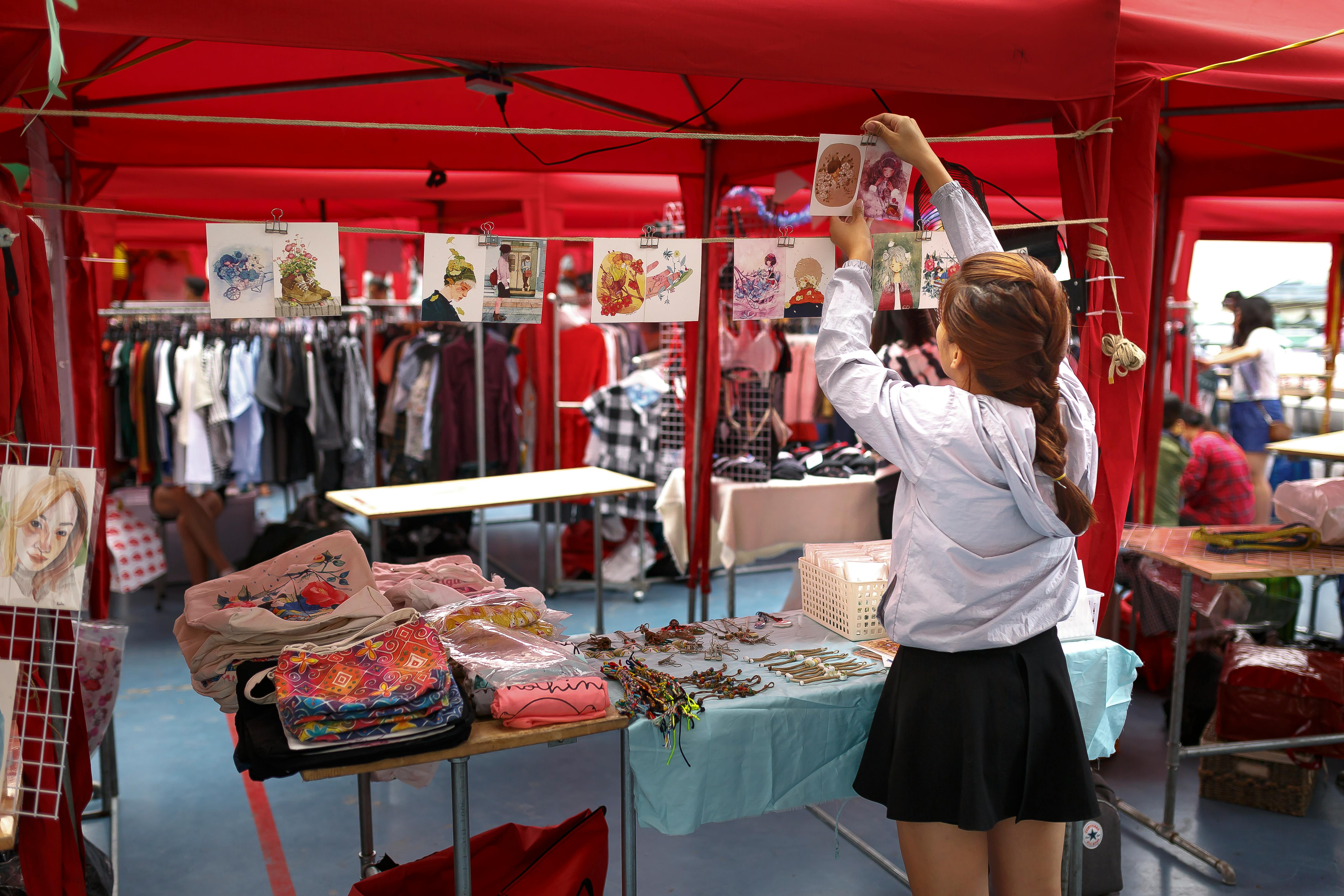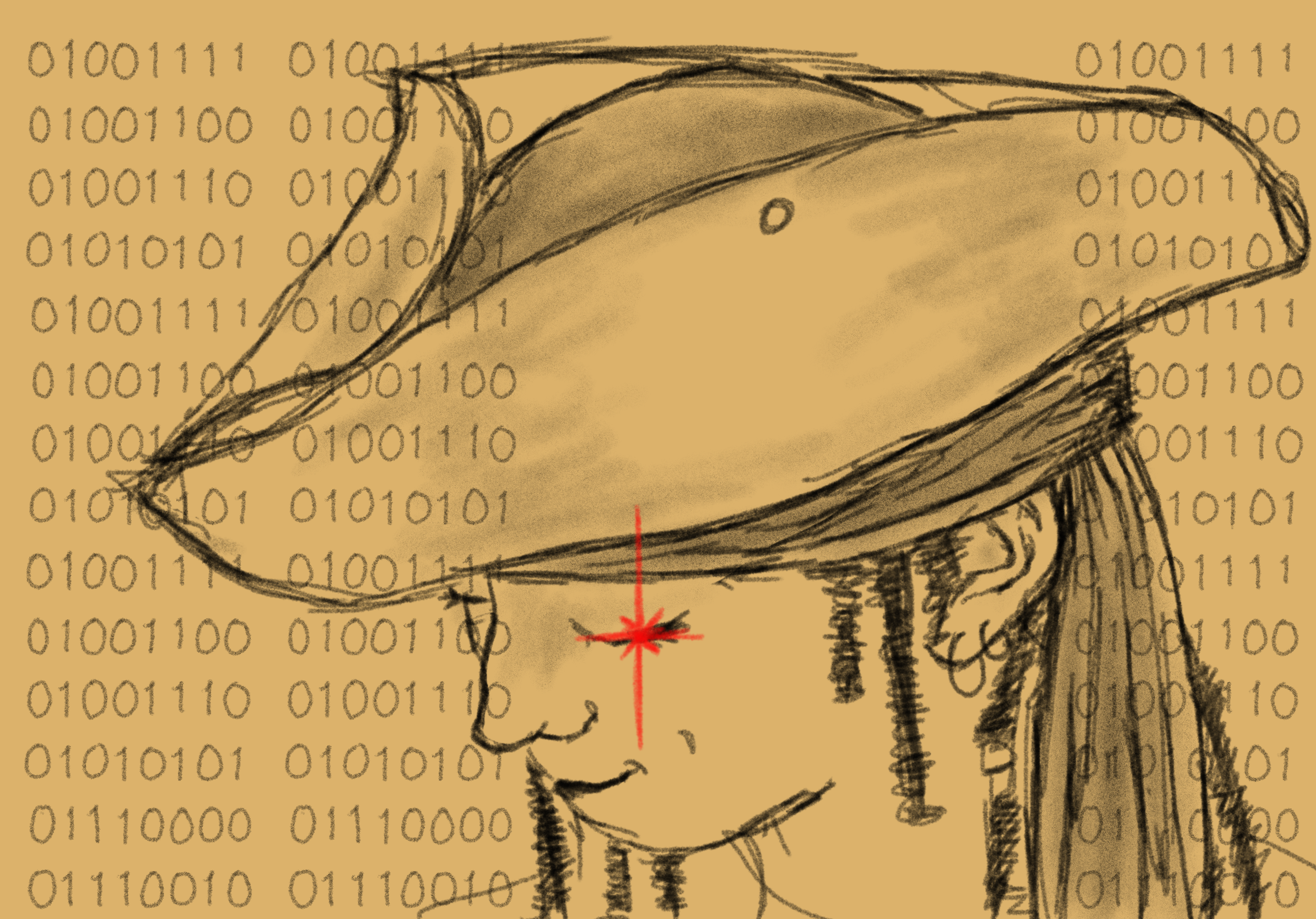The Phoenix was honoured to be able to speak with UBCO Alumni Lady Dia and Trophy Ewila of Kinfolk Nation about The Circle of Ubuntu Exhibition, which was held on UBCO’s campus from October 6th to the 14th and the upcoming Ubuntu Conference on October 23rd. As they explained, The Circle of Ubuntu Exhibit was held to create an opportunity to hold space for Black and Indigenous art, stories, and voices. In anticipation for the Ubuntu Conference, which will act as a continuation of the Ubuntu Exhibit and its conversation, we discussed the reasons and purposes behind the Ubuntu Exhibit, what it took to create that space, what the exhibit engages with and functions as, and what to expect with this upcoming event.
What was the reasoning behind the Ubuntu Exhibit?

“Our work here is based on the philosophy of Ubuntu, I am because you are,” explained Ewila, who is a former SUO President and was the first president of the African Caribbean Student Club at UBCO. “We wanted to have more Black voices and voices of colour have more space to tell their story their way.”
“The purpose is to have space and create space available to Black students and to highlight the works of Black students at UBCO, Black students outside of UBCO, and Indigenous students in the community,” stated Lady Dia, who was named 2021 City of Kelowna Artist in Residence and has been a prominent member within Hearth Sistars and the ACSC.
“Most of the time, much of diversity and inclusivity are left to the performance of the body. The body is used to portray this idea that everything is fine and that we are open but when it actually comes to the real work of accommodating the stories and culture, that’s where issues begin to arrive,” Ewila revealed. “We want to normalize the culture of that and to open space for everyone else to engage with the diversity of stories because we are not just bodies for diversity, we also need diverse stories as well. That’s really the beginning, planting the seed to begin that kind of conversation in public spaces and city-wide as well.”
“Once you get out of the university, it is like that connection between students and the city breaks in a way,” Lady Dia explained. “So continuing that connection and that conversation by working with African Caribbean Student Club and students currently enrolled––and why even the building of space is more than just space for certain types of people where they are––is allowing the merging and the real conversation of intergenerational conversation to happen.”
“Most of these artists are people we have known and have seen them grow their artistic practice and tell stories,” said Ewila. “What we wanted to do was to encourage them to speak more to the public and what that is is to inspire others who are hiding in their little creative pockets and just doing it for themselves to come out and inspire because representation is necessary.”
“Watching and trying to encourage more people to go out and pursue whatever they have inside their passion as resistance to the colonial imagination that only fits you in a particular box that only puts you in a particular space, art is one way to do that,” he continued.
With the Ubuntu Exhibit came a fantastic line-up of artists including Black UBCO students Jane Udochi, Garvin LeBlanc, and Binta Sessay along with Black CATO student Nyashadzashe Dube (aka moonsundiamond) and a special feature from Kristine Tom, a Syilx high school student. As Lady Dia and Ewila explained, they all come from many different backgrounds of study.
“Some of them are in international relations, others were in engineering,” Ewila revealed.
“Only two are actually studying art,” added Lady Dia.
“The artistic part is to express the different facets of one’s being because we are not just one thing,” Ewila explained. When addressing why it was strictly art being used, he stated, “it is because art is directly related to culture and the premise of what we are talking about and in relation to resistance to white supremacy is that racism and these kinds of things are cultural. That is why art is also very central because it is speaking to culture and speaking to the culture and that is what we are doing about creating new cultures of engagement.”
Despite resistance from the institution to have this space, Lady Dia and Ewila kept working to make the exhibit happen for numerous important reasons.

“There was a bit of resistance in the beginning,” Ewila said. “It reminded us that just because things are publicized by institutions doesn’t mean that they are immediately welcome or that they really understand what they are saying. It reminds us that there is still a lot of work to be done.”
“They want to say that they’re having real relations with Black people, people of colour, Indigenous people and we want them to move beyond performative ways,” affirmed Lady Dia. “That was one of the biggest takeaways, just with the process of getting ourselves in that space, especially because that process is going through adjudication to have your artwork in there and that is that white gaze. You can’t tell us how to tell our stories because it's important.”
“We still have to push just a little bit more but not to give up because it’s necessary. Because even in doing that now, it’s opening more doors. If [the artists] need a reference in terms of where they have exhibited, it’s there, it’s present, they have a starting point,” explained Ewila.
“All of these people were expressing mental health through their pieces. A lot of them also went there because they have to because of all the things going on inside and around them,” Lady Dia stated. “Art is not just for that visual entertainment in that space, it’s also doing work and it’s almost like a prayer and a blessing to people that were exhibited.”
“These are people who found healthy ways to cope creatively,” Ewila added. “It shows that they are more resilient, it shows their strength, and I hope people who get to see it realise and appreciate that and take the conversation forward.”
What is there to expect with the Ubuntu Conference?
The conference, which will be offering the opportunity to rethink the future through the lens of Ubuntu, will also be a chance to imagine and discuss a more inclusive Kelowna. As Ewila explained, the conference will also be using the concept of the jam.
“For the jam to really happen, one has to really be paying attention because it starts with a sound and from that sound is where the melody builds. But if you’re not paying attention to that sound, the melody can’t build,” he said. “From that melody comes harmony and from that harmony comes the different layers. But the thing about the Jam is that there is always a lot of space and for us, the jam is like a metaphor for Ubuntu. One of the key questions we are asking is what were the original sounds or what are the original sounds of the land that we are on.”
“And what are they saying now?” added Lady Dia.
“We are centering art and the use of art as a way to speak deeply and also to arrange the space in a nonconventional way, of course with the similarities of conferences but it is a conversation and it is starting a conversation,” Ewila explained. “It’s Ubuntu––I am because you are––so there is participation in the audience and not just for them to come and listen. Even their silence, if there is silence, is part of the conversation and each sound is necessary and is valuable. Even the sound of silence is welcome. In the jam, there is always more space for a new sound.”
“It is all about relationship. Ubuntu is ‘I am because you are’, your existence is dependent on my existence and my existence is also on you. That interconnectedness is not hierarchical,” Lady Dia pointed out. “I think that is what is really special about exhibit number one because it is real relations and we take it further with the conference.”
“We are using the conference to also show and share what we have been doing and others have been doing in the community. There are so many people out there, there is a subculture that’s growing, and we are here requesting space not only for us but for other people,” she continued. “We are working with the youth, saying ‘there are real youth artists out here, Indigenous and Black people of colour, give them space’. That is Ubuntu, that non-performative way of saying ‘we’re actually doing something’. That conference is that conversation, bringing the university into the city, bringing the young children and families into the city conversation.”
“Come with an open heart,” Ewila said. “It is to actually have an open conversation about solutions. We have to put our minds together to find these solutions.”
“We are open. Anybody is welcome. Just come with an open mind,” he continued to affirm. “We are just here to share and make things better.”
If you would like to attend The Ubuntu Conference, you can register through this link here. It will be taking place Saturday October 23rd from 10:00am - 2:00pm PDT at coLab in downtown Kelowna and will be livestreamed on Unicorns.Live.




